I never thought we’d get a controller like the GameSir Tarantula Pro. Regardless of how many pro controllers and futuristic gamepads I get to test out, the DualShock 4 holds a permanent spot on my Mount Rushmore. That controller had a traditional PlayStation feel to it with symmetrical thumbsticks and beautifully comfortable, rounded grips. Moreover, it gave us something no Sony gamepad had previously – room for our pinkies.
But, if you look at my list of the best PC controllers, the DualShock 4’s design strokes are nowhere to be found. Symmetrical pro controllers simply aren’t made these days, and it seems like Xbox’s design philosophies have well and truly won – even on the PS5 controller shelves. But GameSir is changing that. The Tarantula Pro is the DualShock 4 successor we never got from Sony itself. Sure, the DualSense arrived with the PS5, but even it feels so far removed from the PS4 controller that I for one, will always be a bit disappointed by it.
For $69.99 / £69.99, this feels like a direct jab at PlayStation’s “next-gen” controller, especially since it’s only the second gamepad to include advanced TMR thumbstick technology, which advances the stick drift-immune Hall Sensor modules that have become widely adopted today. The Tarantula Pro may not have Sony’s patented haptic feedback or adaptive trigger resistance, but it still feels like better value for money than the stock DualSense, and in some ways, it’s a step up from its expensive Edge model too.
Design
Without opting for the pricey DualSense Edge, PC players really don’t have many symmetrical layout controllers to choose from these days. Sure, you can take the Victrix Pro BFG, swap around its facial components, and have yourself a PlayStation time of it, but we’re overdue some modern pro controllers that have the symmetrical layout as standard because not everyone likes the traditional Xbox feel.
Side by side with the DualShock 4, it’s clear that the exact same size and shape has been used. The Tarantula Pro isn’t wider or longer, but it does have more girth in its grips, offering just a touch more heft than the now skinny-looking PS4 pad. The Tarantula Pro also gives the DualShock 4’s triggers a much-needed growth spurt. While the concave shape of the DualShock 4’s triggers brought a lot of feel to PS4 games, they do now feel tiny by modern standards. The Tarantula Pro’s triggers still aren’t the longest, but they do have a more rounded shape to them that makes them easier to pull from an angle.
On the other hand, the facial panel of the Tarantula Pro feels like it has its own modern identity, whether that’s from GameSir injecting a bit of personality, or just a bit of a last-ditch effort to avoid patent infringement. A camo faceplate harnesses this controller’s main inputs, including a very traditional four-way D-pad which again, you don’t see often these days besides on nostalgic controllers like the PB Tails Crush Defender.
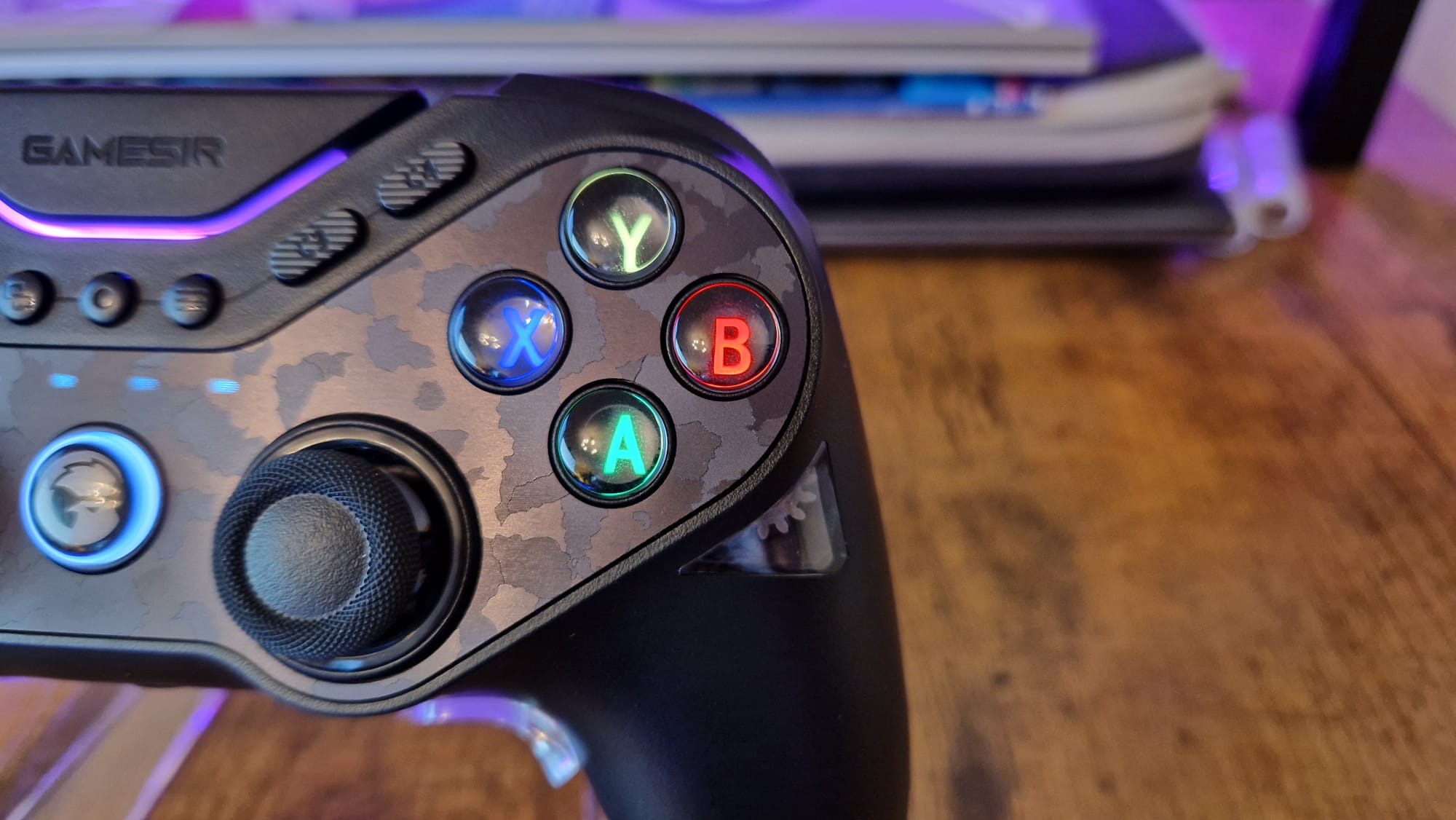
The face buttons are an act of creative genius. Visually, they’re so distinct since they don’t actually hold any specific symbols on their outside. When you turn the controller on, you can see and hear some gears spinning up, and depending on whether you’re connecting to PC or Nintendo Switch, the facial buttons can pivot into the layout you need. They do have a domed shape to them though, and a slightly deeper actuation than the very flat and shallow face buttons on the DualShock 4. I’ll talk more about this in the performance section, but it feels like speed is a victim as a result, and they’re the one part of the Tarantula Pro that lets the build quality down.
The thumbsticks harness a much more premium feel though, with metallic components that clack at their borders with a deeper sound than the DualShock 4 could ever muster. Two back buttons feel very much at home here, and an enlarged GameSir and “M” buttons give you easy power to bend the Tarantula to your every whim.
Features
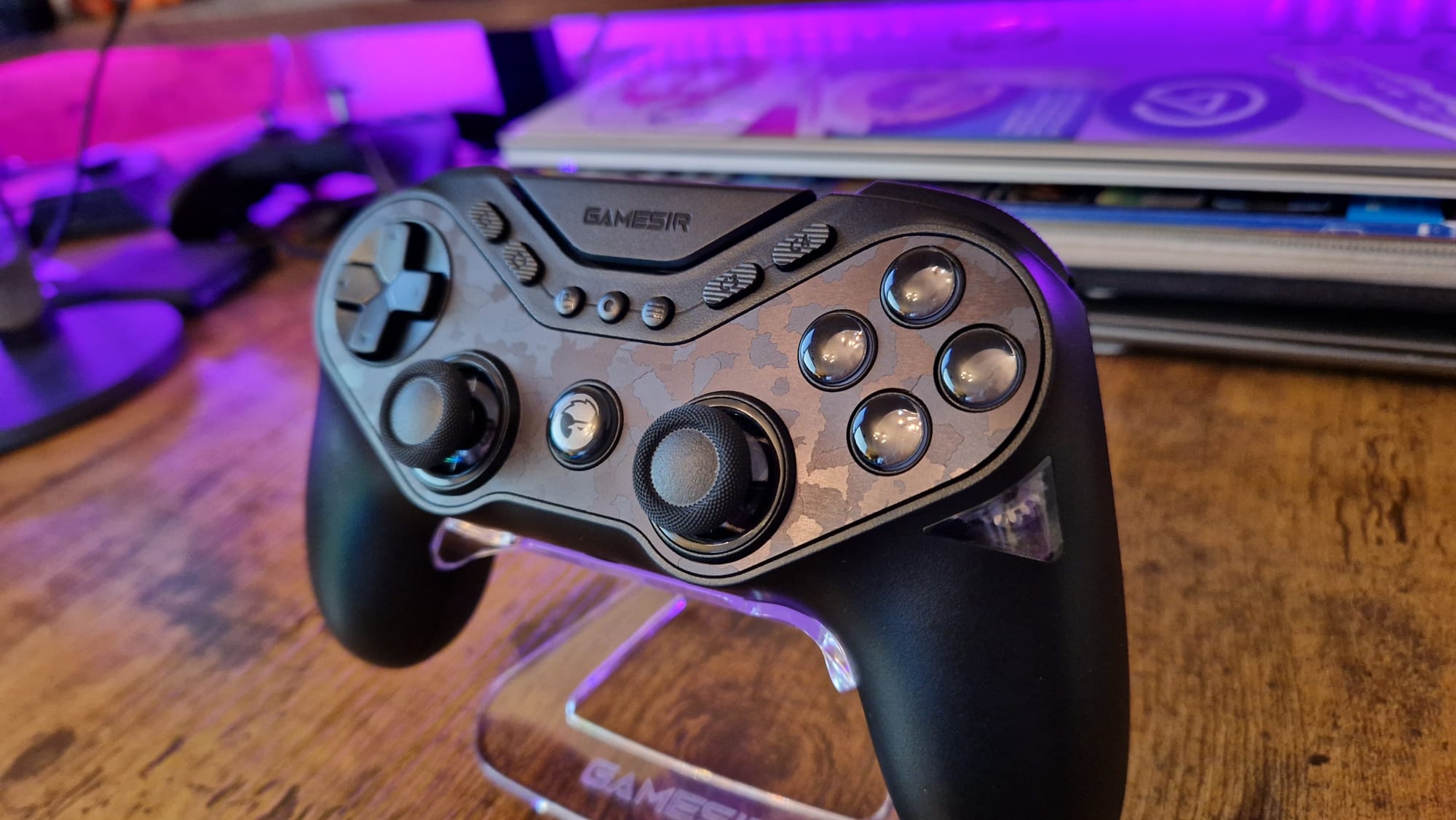
As mentioned, the thumbsticks have TMR modules in them, making this just the second consumer-ready controller to use this futuristic technology. TMR stands for Tunneling magnetoresistance, and it’s an even more advanced version of the electromagnetic technology found in Hall Effect controllers. In practice, it makes sticks just as immune to stick drift but capable of registering significantly more positions on an axis, allowing for more accuracy and directional potential. At the same time, TMR sensors can communicate inputs at much higher polling rates. The Tarantula Pro is only capable of a 1,000Hz polling rate on PC, but TMR sensors are futureproofed to go much, much higher than that.
What’s nice is that you don’t need to deep-dive into the technicalities of this TMR tech if you don’t want to, but GameSir’s updated PC app does allow for it. Gone is the GameSir Nexus app that’s been used for all of the brand’s controllers so far. The new Cyclone 2 and Tarantula Pro both use the GameSir Connect app, presumably to give users more specific features for contemporary models. I was a big fan of the fact that the deadzones of the thumbsticks were already minuscule out of the box here, as usually with some of the best Xbox Series X controllers they’re far too big when you first start playing.
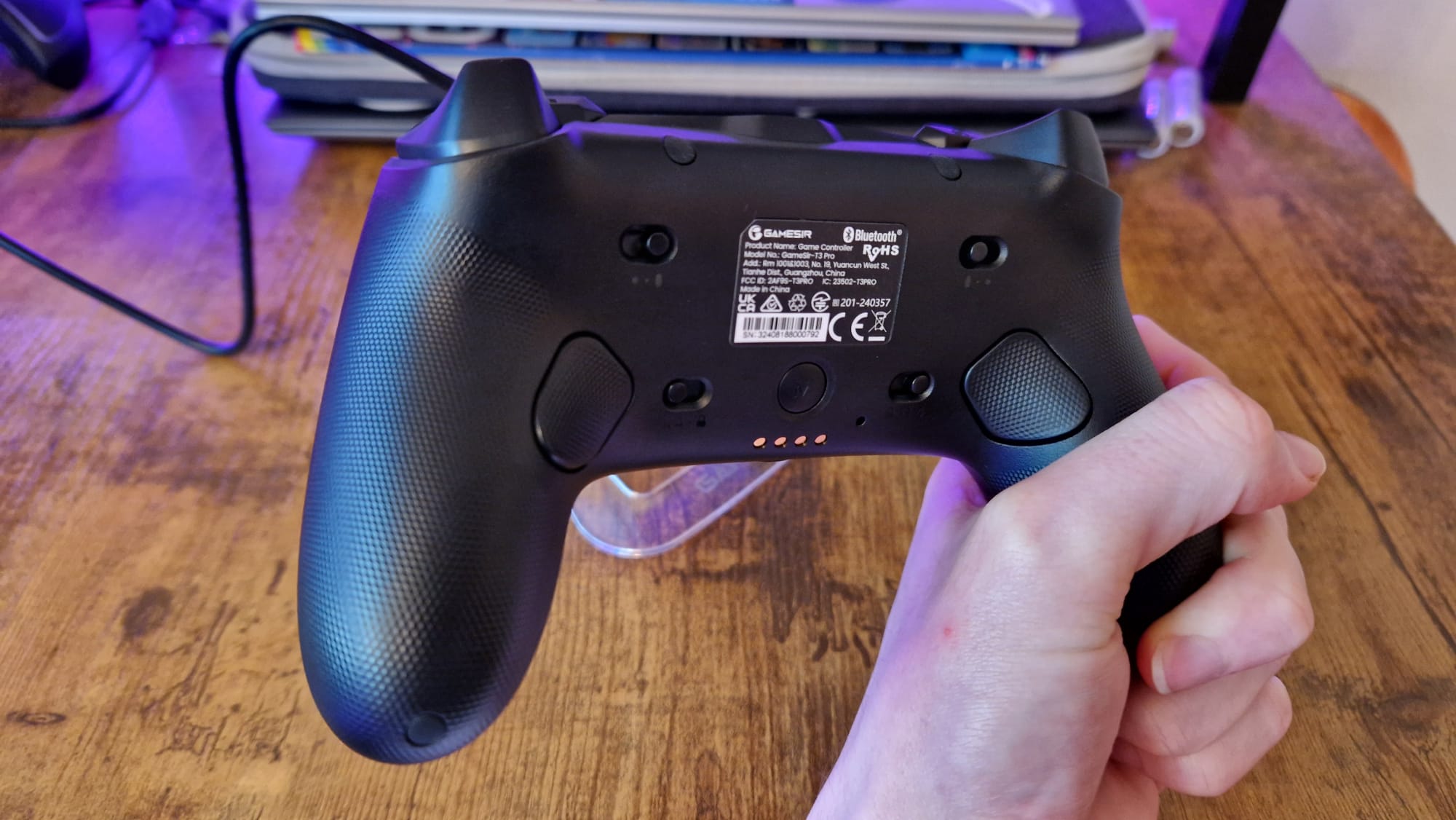
You can remap any of the Tarantula Pro’s buttons in the Connect software, as well as set your triggers to either be in adaptive mode, hair-trigger mode, or their regular setting. This is plenty of customization for a controller that has trigger stops anyway. These are good, and much better than the ones on the PowerA Fusion Pro Wireless which still have quite a long actuation in their strictest setting. The triggers here feel like instant microswitches when locked into their secondary mode, making them primed for more competitive play.
The rest of this controller feels primed to be a competitive play masterpiece, and with just two more back buttons it would go from a controller I’ll use for a lot of single-player games to the main one I use for 90% of my playtime.
You may think that just two back buttons are all the extra functionality you get here, but actually, the four smaller buttons bordering the Tarantula’s touchpad give you more to work with. These can be set to any other function on the pad, or as a combination of up to three buttons at once. Beyond that, the touchpad has an actuator on either side of it, meaning you get a further two buttons to map if you so wish. As great as it is to have all of these at your thumbs disposal, they are a little confusing to distinguish from one another mid-game, and they’re all quite small. It’s a real shame GameSir opted for these over another set of back buttons, since the grips clearly have room for more. If you don’t want to use back buttons, there are some locking switches on the back of the controller that take them out of the equation entirely.
The Tarantula Pro comes with a USB-C to USB cable, and I’d highly recommend holding onto it because the USB-C port on the controller has one of those annoying narrow gateways that means not every shape of connector will fit into it. This bugs the life out of me, and I wish peripheral makers would let this design flaw die already, but I digress. Luckily, there’s also a USB Wireless dongle in the box, and the Tarantula is capable of Bluetooth connections as well. You’ll also benefit from a light-up charging stand, which I’m happy to report can connect via USB A or USB-C. If you use the USB-C side, this gives you a slot within the stand to holster your wireless dongle so you don’t lose it, although since this is actually a USB port, I wouldn’t suggest you push it in all the way because it will prove very difficult to get back out again.
Battery life is quoted as an inexact “long-lasting”. While I don’t have an exact time to share either, I can say that in over 10 hours of play testing, I’m yet to see it run out. When a charging stand is included in your purchase anyway, it’s much harder to find the faults with strange battery life claims, so I’ll let it slide for now.
Performance
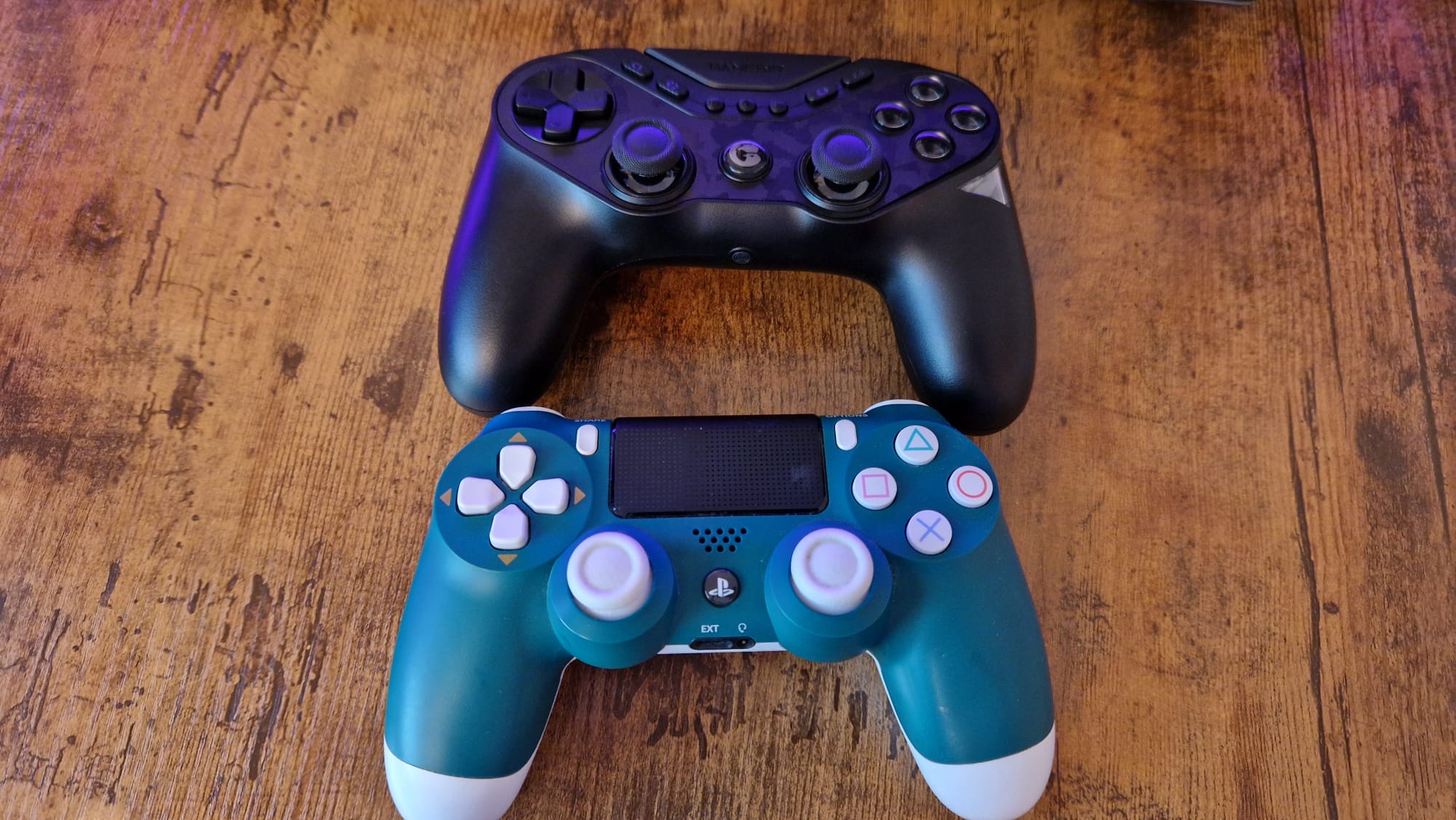
I’m coming off the back of my review of the PB Tails Crush Defender and the Razer Wolverine V3 Pro. Since the former, my standards of controller comfort have been well and truly raised, and since the latter, it’s going to take something with serious speed and feel to make me sit up and take notice. In many ways, the GameSir Tarantula Pro captures a lovely halfway point between them both. The comfort here feels as good as it did on the DualShock 4, except with added heft. The mix of membrane and microswitch functions on the shoulders and facial elements feel like they give a lot of grounds for competitive play too, just like Razer’s option.
As someone who has always loved the DualShock 4 and has been dying to see more symmetrical pro controllers on the shelves, this is a no-brainer for me. As a casual controller for cozy gaming, the Tarantula is just as viable as it is in competitive fighting games, or in FPS titles.
Admittedly, microswitch face buttons may have offered more in twitchy games like Dragon Ball: Sparking Zero, but I think to capture that DualShock 4 feeling, the designers at GameSir had to go for membrane ones. With the holographic symbols giving a unique design flare, I feel bad for criticizing them, but whether it’s their domed shape or slightly larger actuation, they don’t feel quite as snappy as the DualShock 4.
This small gripe doesn’t prevent the Tarantula from feeling like a super-cohesive gamepad in fast-paced games. In Ninja Gaiden 2 Black, I felt I had all the functionality I needed to string combos together during fights. In more complex games like Helldivers 2, there was a lot of functionality in macro-making thanks to those additional face buttons, although they just don’t feel as useful as two more back buttons would have.
I really do wish that GameSir would offer us four back buttons one of these days. The rest of this controller feels primed to be a competitive play masterpiece, and with just two more back buttons it would go from a controller I’ll use for a lot of single-player games to the main one I use for 90% of my playtime. This is the first time I really feel as though GameSir has missed a trick because there’s never been a symmetrical controller with four back buttons. People who prefer this layout want competitive options too, please. The longer, rounded grips on a DualShock 4-reminiscent controller would have been the perfect opportunity for GameSir to truly break the mold, and I’m a tad let down by the fact it opted for some smaller, confusing face button extras instead.
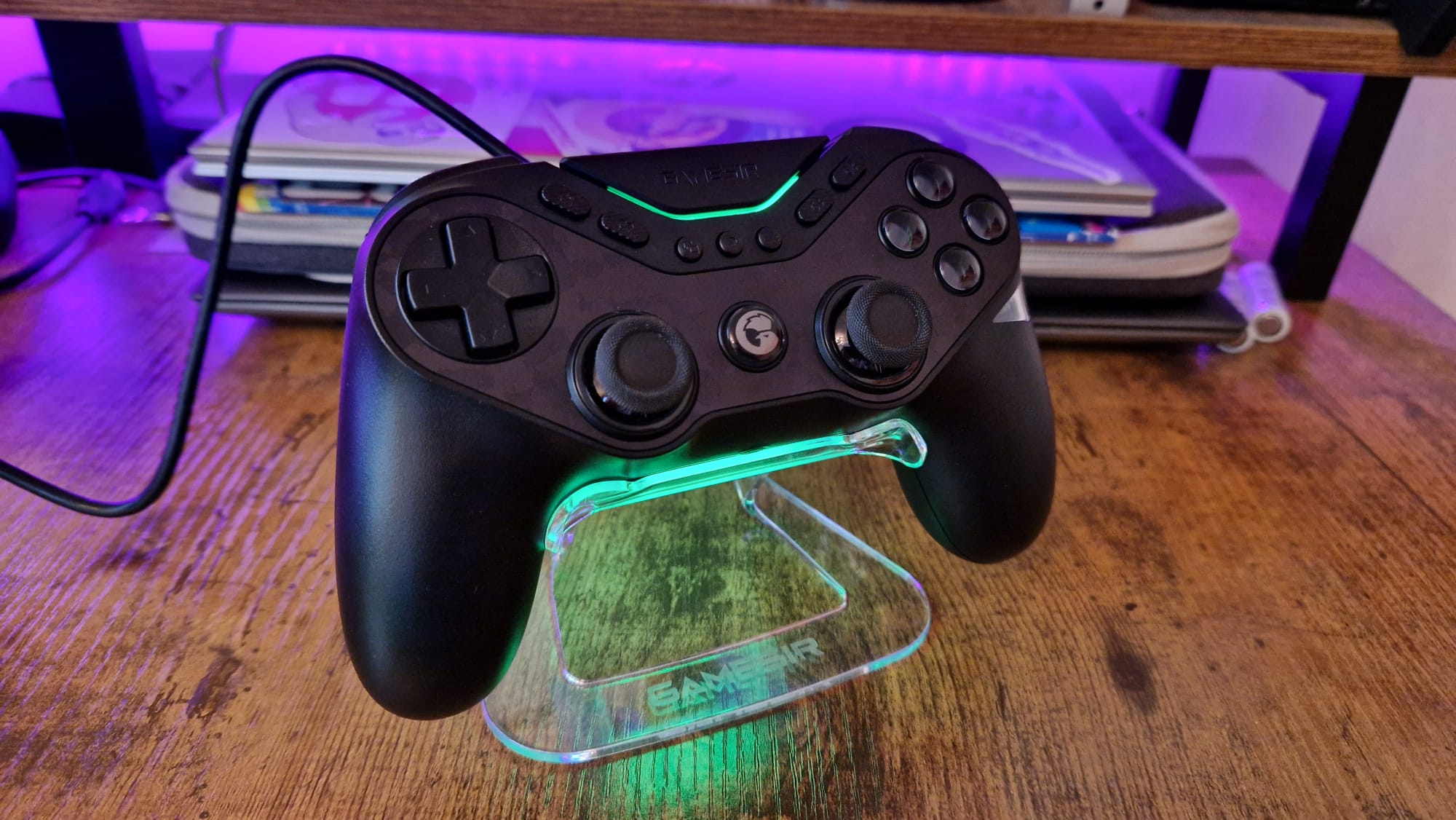
What I’m not let down by are the excellent thumbsticks, which without any size-changing toppers still managed to play competitively. Running around in Hunt: Showdown, I really felt the difference that TMR modules give. The smallest of aiming adjustments felt as possible as they do on the Victrix Pro BFG for Xbox using its tallest thumbstick attachment. At the same time, sweeping shoulder aim flicks felt robust and controllable thanks to dialed-in thumbstick tension. I think the increased sensitivity you get from Hall Sensor thumbsticks applies here. It took me some time to get the feel for sensitivity changes, but on balance, this is a surprisingly good FPS controller.
As I do with any controller, I tested the Tarantula in the precise platforming of Celeste, and it felt like a natural habitat. Using the microswitch D-pad, directional inputs were speedy, and using the thumbsticks felt just as accurate. I did feel as though the out-of-box rumble was a little weak compared to the Turtle Beach Stealth Ultra, but you can tweak this in the GameSir Connect app to get the experience you want.
Thanks to the exquisite level of comfort the Tarantula Pro has, I’ve really been enjoying playing longer sessions in narrative experiences like 1000xResist as well. Using the back buttons or not, this is a controller I can play with for hours at a time without feeling any discomfort or awkward thumb cramps. It’s something I’d gladly record gameplay footage with too since those sticks can handle slow, cinematic camera pans with ease.
Should you buy the GameSir Tarantula Pro?
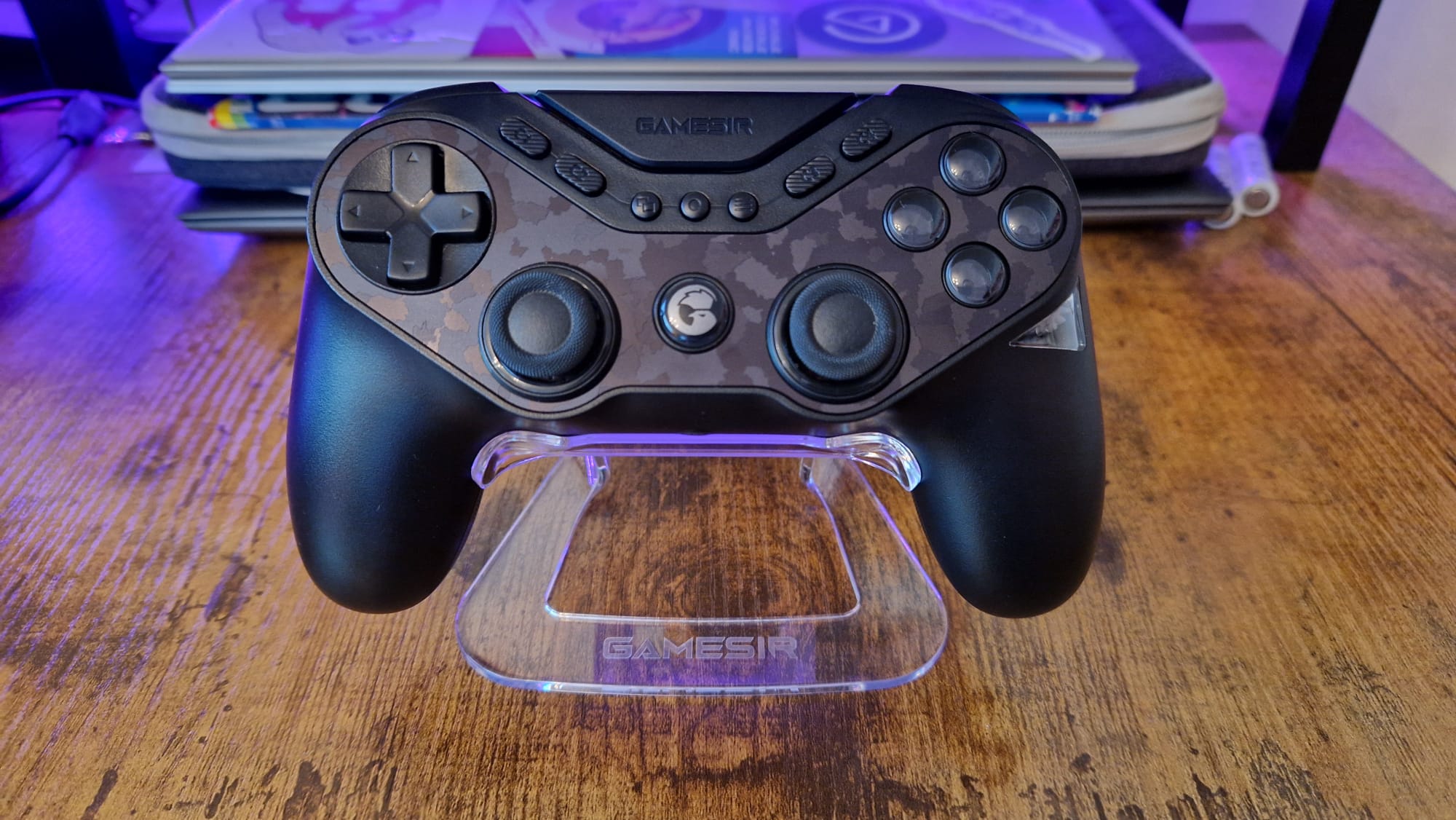
As someone who has always loved the DualShock 4 and has been dying to see more symmetrical pro controllers on the shelves, this is a no-brainer for me. As a casual controller for cozy gaming, the Tarantula is just as viable as it is in competitive fighting games, or in FPS titles.
I must admit, this is the first GameSir controller I’ve used that I truly feel the lack of two more back buttons, but if you’re desperate for the extra utility, those face buttons may come in handy.
In the end, this stacks up very well against the official PlayStation controllers, especially the DualSense Edge, which is more than double the price for essentially the same functionality and far less futureproofing. I can thoroughly recommend the GameSir Tarantula Pro. Besides a few changes I’d make, this is the pro-DualShock 4 I’ve always wanted.
How I tested the GameSir Tarantula Pro
I put the GameSir Tarantula Pro controller to the test over the last few weeks before writing up this review. In that time, I’ve used it for all of my gaming on PC. I put it through my usual suite of testing games, from Hunt Showdown to Celeste, to Dragon Ball Sparking Zero. I also enjoyed playing 1000xResist with the Tarantula in hand.
I compared my experience closely with the DualShock 4 since that was the controller this product was designed to mimic. I also compared the specs, features, and feel of this gamepad with other contemporary ones I’ve tested lately, like the PB Tails Crush Defender and the Razer Wolverine V3 Pro.
For more on how we test controllers, check out the full GamesRadar+ Hardware Policy.
On the hunt for your dream controller? Take a look at the best PS4 controllers, the best joysticks, and the best Nintendo Switch controller.





